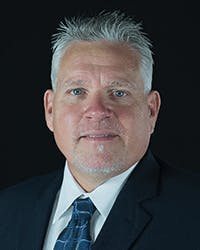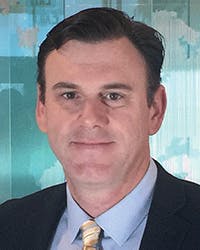Through the Eyes of 3 Team Members —
In today’s climate, organizations need the right kind of leaders to help their teams thrive. What qualities make "the right kind of leader"? Dana Brownlee, President of Professionalism Matters, Inc., suggests that leaders focus on 7 traits or behaviors that can help make a difference for teams and their companies during the COVID-19 pandemic.
These traits are:
1. Candor
2. Consistent Reliable Fact-Based Communications
3. Empathy
4. Managing Hybrid Teams
5. Flexibility and Adaptability
6. Humility
7. Active Listening
Dana is adamant about the importance of these. In a recent Forbes article, she said, "Admittedly, these aren’t the only traits that matter for leaders during this pandemic, but these are 7 critical ones. Many of these traits are traditionally viewed as tertiary, nice-to-have qualities, but in this unprecedented time, they are absolutely necessary for leaders to lead organizations through a time of inconvenient uncertainty and collective trauma. Indeed, this type of leadership won’t just be required at the top of the organization chart but at every level of human interaction."
We’ll take it one step farther and say, if you really want to learn about a leader, ask his/her team members some pointed questions. That’s why we kindly asked 3 of Andrew’s team members to be candid with us about 5G, failing fast, and the future. Check out what they had to say about Andrew’s leadership style.
Sources:
https://professionalismmatters.com
https://www.forbes.com/sites/danabrownlee/2020/05/07/7-leadership-traits-for-the-post-covid-19-workplace/#6c834a3f2d4d
VP, Access Engineering
Topic: Coronavirus (COVID-19) Team Adjustments
Question: How is your team adapting to the many changes they face?
Garbelman: I am very proud of the way our team has adapted to the changes as a result of the COVID-19 pandemic. They have been working from home, staying safe, and have not missed a beat! We had to be innovative and conduct more remote lab testing, but they delivered.
Andrew communicated very clear priorities with us during this time: employee safety, customer service, and business priority. He has helped us stay aligned, work with our teams, and ensured that these priorities were being implemented.
Topic: Admiration
Question: What do you admire or respect most about Andrew? Why?
Garbelman: I admire the breadth of Andrew’s technical knowledge. He invests a great deal of time in understanding this industry’s technology, and he provides strong guidance to the teams on how best to use it to drive business opportunities for Lumen.
Topic: 5G
Question: While Lumen doesn’t offer its own 5G product, what important things is your team doing to help advance 5G? Please share an example of the most interesting/challenging 5G-related project your team has experienced.
Garbelman: My team has been working on fixed wireless access technology to support our network infrastructure investments as a part of the FCC’s Connect America Fund program. Bringing in a new wireless solution and working to get it adapted has been very challenging. However, it’s also been a very rewarding project to transform and expand a technology that gives our customers in rural areas another service option.
Topic: Failure
Question: How does Andrew handle team failures? What have you learned most from him about how to rebound from errors?
Garbelman: At Lumen, we like to say Fail Fast. We understand that sometimes, things just don’t happen the way we plan. So, we learn from those mistakes and quickly move on. First, Andrew gathers all the information. He works with the team to understand exactly what happened, and then determines what can be done differently the next time to avoid it.
Andrew’s approach to solving issues has taught me to ask questions, follow-up, and learn from the mistake. Communicating and being accountable are key steps along the way.
Topic: The Future
Question: What emerging or disruptive technology excites you the most for the ICT industry? Why?
Garbelman: All things wireless. Fixed wireless access, millimeter wave, and in-home wireless technologies. They all offer greater distance, increased speeds, improved reliability, and reduced costs. Those benefits can be realized in our rural and urban areas, as well as in customers’ homes. Using these wireless alternatives allows us to provide those crucial broadband connections customers need to connect to the things that matter most.
Topic: Inspiration
In a large organization, there can be a tendency for the Institution to dampen the Inspiration.
Question: How does Andrew inspire, mentor, and lead, others on your team now that virtual leadership is more important than ever?
Garbelman: Andrew does an amazing job communicating with the teams, individually and as a group. He knows the importance of bringing us all together for meetings that help keep us informed. I always appreciate how he personally reaches out to us by phone and email, even though he’s a very busy man. I enjoy the personal interaction, but honestly, I don’t know how he makes the time for it. When you see that level of effort, it inspires everyone to be a better leader.
Topic: Failure
Question: How does Andrew handle team failures? What have you learned most from him about how to rebound from errors?
Condello: The Oxford dictionary defines Failure as "an absence or lack of success, the omission of expected or required action, or the action or state of not functioning." These definitions suggest a binary, all-or-nothing outcome, and are wholly opposite from the way I engage with Andrew.
Instead, our interactions focus on defining the goals desired, the many paths we might take to achieve those goals, and then talking though the resources, relationships, processes, and external factors that might be required to understand those various scenarios. Since my work is heavily influenced by external factors, having alternate paths allows me to move quickly to another approach, if required.
Ironically, while Failure is not a word used in my interactions with Andrew, this approach is consistent with Fail Fast strategies, albeit at a strategic level!
Topic: Overlooked Issues or The Hard Topics
Question: What should all of us in the Information and Communication Technology (ICT) industry be talking about that we are not? Or, what current topic is the most important that needs additional and different attention?
Condello: While Lumen leverages strong risk-management approaches in all aspects of its business, we are unusual in that my team is focused exclusively on systemic risks that can be mitigated only in collaboration with our peers, other critical infrastructure sectors, and the US government. Scenarios covered in these efforts include how the nation (and Lumen) would respond to wide-scale disasters, such as an earthquake in the New Madrid seismic zone, a major electro-magnetic pulse event associated with solar storms, or how we would ensure communications work during a pandemic.
To address these challenges, we plan regularly with our government and industry partners, while leveraging Lumen’s response and recovery practices. This structure contributed to the demonstrated resilience of Lumen’s and our partners’ networks during the COVID-19 response.
While Lumen’s ability to maintain connectivity for our customers throughout the significant demands to COVID-19 was a success, the experience highlighted a few areas of concern. The level of integration across infrastructure sectors has never more fully been on display and showed how deeply interdependent the economy has become. The disruption to domestic and global supply chains affected the ability to provide needed protective equipment and, at times, even basic commodities. Both issues highlight the need to deeply engage businesses large and small in planning the nation’s economic resilience and national security. Lumen has supported these efforts for years.
Andrew’s willingness to dedicate corporate resources on these hard and sometimes overlooked issues, especially ones unlikely to provide short-term business opportunities, shows the importance Lumen places on our responsibility to provide for our customers in the hardest of times, and the seriousness with which we approach our stewardship over the communications backbone of the nation.
Topic: The Future
Question: What emerging or disruptive technology excites you the most for the ICT industry? Why?
Condello: I’m excited to see software-defined networking (SDN) transforming how we operate our networks, create products, manage our business, and deliver our services. Globally, network infrastructure owners, including the fixed and wireless carriers, as well as owners of enterprise infrastructure, recognize the prospect for enhanced performance, flexibility, adaptability, capabilities, resiliency, security, and cost advantages, of virtualization. They are rapidly taking the steps to migrate quickly to an SDN-ready environment.
Further, SDN simplifies the ability to migrate toward or integrate networking with Cloud-based services, and towards new, or disruptive operational capabilities which are built upon SDN functionality — helping to accelerate the pace of change as we go forward. This transformation will impact all layers in the ICT ecosystem, including end users who adopt the SDN-enabled applications to operate their business.
Concerns about the security implications (both opportunities and threats) of SDN’s software base are being aggressively pursued at all levels of implementation. SDN facilitates the incorporation, or addition of sophisticated security features that can rapidly detect and actively mitigate unintended problems or malicious activities. To achieve the full security benefits that SDN promises, the industry needs to work towards open-standards for both software-based services and application programming interfaces (APIs), leading to robust security practices for all users of SDN, whether Cloud, applications developer, network provider, or enterprise. As experience with SDN grows, it has the potential to be more secure, resilient, adaptable, and resistant to the ever-changing threat environment than the corresponding hardware-based instantiations it replaces.
When wireless carriers moved from 3G to 4G, there was an innovation explosion manifested in the wireless application business. As carriers and enterprises increasingly move their infrastructure towards an SDN-ready state, the opportunity for comparable innovation is not only possible, but probable, and I look forward to seeing what develops.
Topic: Inspiration
In a large organization, there can be a tendency for the Institution to dampen the Inspiration.
Question: How does Andrew inspire, mentor, and lead, others on your team now that virtual leadership is more important than ever?
Condello: Andrew supports Inspiration by being an engaged and thoughtful advisor in our efforts. He generally assists in providing guidance on the initial direction of the effort (goal/approach), parameters (limits), and then acting as a resource for finding expertise to support our efforts. This light-touch governance is particularly useful in my work where external factors commonly create scenarios where we need to modify our approach. Grounded by his broad span of technical knowledge, Andrew’s ability to quickly pivot when required, and to provide informed advice on the next possible step to take, is indeed inspiring.
Dave Cooper
VP, Global Network Architecture
Topic: Admiration
Question: What do you admire or respect most about Andrew? Why?
Cooper: Andrew’s strong leadership, stewardship, and thoughtfulness, are consistent traits I have admired for over 9 years at Lumen. Andrew is a leader of technologists. He surrounds himself with a strong, diverse team and allows them to flourish in their responsibilities. He does this by supporting an environment of inclusion and leading by example. In his daily interactions with his team and stakeholders, he demonstrates a genuine curiosity to understand different perspectives, and has a desire to learn and to be influenced by those around him. This environment, fostered by Andrew’s leadership, has been instrumental in producing positive business outcomes for Lumen and its shareholders.
Topic: Edge Computing
Question: Share your team’s 2020 goals and progress in this area. What are the primary challenges related to it for Lumen and other providers?
Cooper: Edge Compute represents a significant opportunity for Lumen to take advantage of the industry trend of moving the Cloud and distributed compute closer to the enterprise and consumer. With the significant effort to digitally transform their businesses and the growing application demands around latency, enterprises need more options beyond their private data centers or public Cloud. Lumen is well positioned to accommodate this need and, by coupling its vast and automated network infrastructure, we believe we hold a unique value proposition for those enterprises. To take advantage of this, Lumen has already announced significant infrastructure investments in several locations through the US to ready its facilities for use by enterprises as market-local compute centers. This allows a breadth of services ranging from colocation, bare-metal and virtualized multi-tenant/Cloud services to be consumed while leveraging a highly dense fiber network that is able to interconnect those enterprises to their sites, private data centers, and public Cloud.
To support the Lumen Edge Compute effort, our CTO organization is focused on delivering both network infrastructure, Bare Metal as a Service (BMAAS) and private Cloud offerings, in 2020. This requires a combination of hardware and software capabilities that provides a go-forward platform capable of handling the range of enterprise requirements. We have made much progress in this area — having completed hardware designs and placed orders for servers and data center network infrastructure, as well as demonstrated orchestration of portal-based bare metal provisioning and operation of those servers. The first number of target cities will be deployed with Lumen Edge Compute in the coming months, with service offerings reaching market in that same time.
The primary challenges of delivering Lumen Edge Compute largely revolves around the software orchestration and accommodation of various Enterprise requirements for bare metal services — including supported Operating Systems and support capabilities. We have spent some time refining these capabilities with what we think is the best market-introduction product, and will continue to enhance support as we move forward.
Additionally, Lumen will leverage its Edge Compute to offer managed capabilities that give our customers the option to outsource some or all of the capabilities offered — as well as manage these deployments in multi-Cloud scenarios. The wide-ranging requirements from Enterprises pose one of the larger challenges in building a flexible platform that can be automated to its fullest. This is where Lumen believes it can differentiate itself across the market by taking a modularized approach to deploying such services.
Topic: You
Question: What are you doing to ensure you continue to grow and develop as a leader?
Cooper: As a technology leader in the Information and Communication industry, the pace in which change occurs continues to shrink. Throughout my own 20+ years journey, I’ve learned that the investment in learning new concepts, capabilities, and approaches, must be a constant — even when our time is under constant stress from our daily responsibilities.
As a leader of architects, engineers, and developers, that investment in learning is not only for the purpose of keeping skills up-to-date, but to provide valuable perspective that can improve your ability to build, manage, and operate teams.
Mentoring, both within your company and outside it, has also been key to my own development as a leader. While related to investment in learning, seeking out advice from individuals who have demonstrated a high degree of success in technology is a great way to apply learnings and uncover areas of improvement you may not necessarily see in yourself.
Topic: The Future
Question: What emerging or disruptive technology excites you the most for the ICT industry? Why?
Cooper: The tight coupling of machine learning (ML), artificial intelligence (AI), and automation, holds a great deal of opportunity when addressing infrastructure availability. Legacy technologies tend to be reactive in nature, and prohibitive in their ability to prevent future service impacting events. With the introduction of techniques such as data acquisition, forecasting, learning/training, event correlation, and automation, various parts of the network and compute operation can achieve significant improvements in overall availability.
Automating the operation of the network and compute is not new. There has been significant progress made throughout the years to build automated scripting that allows workflows and tasks to deal with pre-determined scenarios often encountered — in reactive context. By incorporating ML and AI, with a larger and wider degree of telemetry data, we can potentially transition to an environment that is both predictive and self-learning.
One example of where Lumen is pursuing this technology is applying predictive analytics in order to detect future failures in communications equipment. By leveraging a ML framework, we incorporated a wide range of data from our communications equipment to predict failures within a certain confidence and interval (patent pending). While there is still much work to do, our results have been promising. So much so, we have incorporated some aspects of this framework into our production operations as we continue to refine the technology.
Lastly, as we look to the future, our ability to harvest near real-time telemetry data from our network will dramatically improve the applicability of this technology. Using this data, we may not only enhance our automation capabilities, but use that data to steer traffic based on Service Level Agreement (SLA) requirements and expected network behaviors.
Andrew Dugan is CTO for Lumen. He is responsible for the development, integration, and deployment, of Lumen’s global network supporting Consumer, Wholesale, Government, and Enterprise markets. Andrew is a veteran technology executive with more than 30 years of experience in building telecommunications networks, switching platforms and services platforms. Prior to his CTO role, he served as Lumen SVP of technology planning, network architecture and security. Dugan is an innovator with more than 20 networking patents.
Lumen is guided by our belief that humanity is at its best when technology advances the way we live and work. With approximately 450,000 route fiber miles and serving customers in more than 60 countries, we deliver the fastest, most secure platform for applications and data to help businesses, government and communities deliver amazing experiences.
Learn more about Lumen’s network, edge cloud, security, communication and collaboration solutions and our purpose to further human progress through technology at news.lumen.com, LinkedIn: lumentechnologies, Twitter: @lumentechco, Facebook: lumentechnologies, Instagram: @lumentechnologies and YouTube: lumentechnologies. Lumen and Lumen Technologies are registered trademarks of Lumen Technologies, LLC in the United States. Lumen Technologies, LLC is a wholly-owned affiliate of CenturyLink, Inc.








